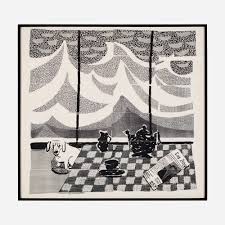The Art and Influence of David Hockney

Introduction
David Hockney, a prominent British painter, printmaker, and photographer, has made an indelible mark on the world of modern art. Known for his vibrant colours and innovative approaches to perspective, Hockney’s work not only showcases his unique artistic vision but also reflects the cultural transformations of his time. As an artist who has pushed the boundaries of painting for over six decades, understanding his contributions is essential for appreciating contemporary art.
Key Works and Innovations
Born on July 9, 1937, in Bradford, Hockney studied at the Royal College of Art in London. He gained initial fame in the 1960s with his iconic “pool paintings”, depicting California’s sunny landscapes and swimming pools, epitomising the lifestyle of the era. One of his most celebrated works, “A Bigger Splash” (1967), illustrates his ability to merge reality with abstraction, combining playful use of colour and form.
Hockney’s artistry goes beyond traditional methods; he often incorporates technology in his creations. In recent years, he has embraced digital tools, using iPads and iPhones to paint, showcasing how technology can rejuvenate artistic practices. His digital work, such as “Garden Landscape” (2010), highlights how he continues to explore new mediums while maintaining his signature style.
Current Exhibitions
In 2023, Hockney’s works were showcased in a major retrospective at the Tate Britain. This exhibition highlighted the span of his career, featuring pieces from his early days to his recent digital art. Critically acclaimed, it not only celebrated his artistic innovation but also his ability to connect with broader themes such as love, memory, and identity.
Conclusion
David Hockney’s influence on the art world is profound, and his work continues to inspire new generations of artists and art lovers alike. As he approaches his 86th year, Hockney remains an active creator, reminding us of the endless possibilities of artistic expression. With ongoing exhibitions and a commitment to exploring new frontiers, the significance of his work will undoubtedly endure. For readers, engaging with Hockney’s art not only provides insight into his vision but also prompts reflections on the evolving nature of art in a changing world.







